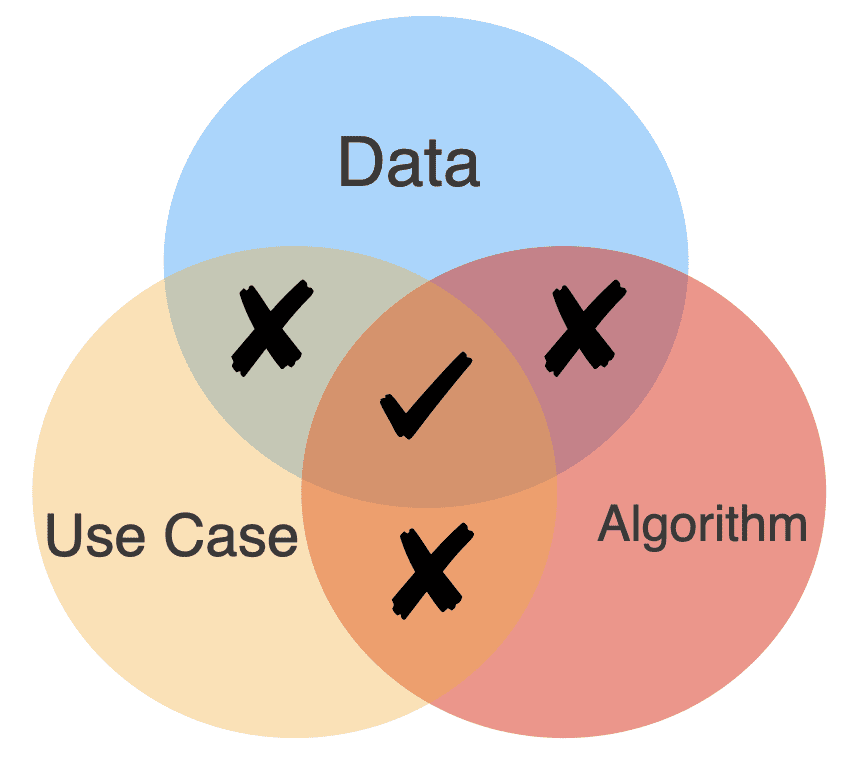CONTACT US
AI Consulting Explained, with 3 Unique Tips for Positive ROI
AI Consulting, sometimes referred to as machine learning consulting, may be uniquely valuable and differentiating for organizations of all kinds, but it can be difficult to understand exactly what happens when you hire an artificial intelligence consulting firm. Read more to learn about artificial intelligence in business, and how you can maximize your ROI with a clearer picture of your needs and our tips for success.
What is AI Consulting?
In its most basic form, AI consulting means working with a consulting firm that can deeply understand the business needs of your organization, master your data complexities, identify the key drivers of success, and finally design and implement an artificial intelligence services plan to deliver value from your data. Properly leveraging artificial intelligence in business often presents a massive prioritization problem, as you can tackle any number of opportunities. Choosing the right place to start can drastically improve your long-term ROI.
How Do I Know that I Need an AI Solution?
Determining if a company needs an AI solution depends on the business goals and challenges that the company is facing. An AI solution can help a company solve complex business challenges that require large amounts of data to be analyzed. They can also automate repetitive tasks in uniquely intelligent ways and make more accurate predictions. A company may need an AI solution if they have significant quantities data that needs to be processed, such as customer data, financial data, or operational data. Additionally, if the company is experiencing inefficiencies, errors, or inconsistencies in their current processes, AI consulting may be beneficial. Next, let’s look at some common pitfalls when pursuing AI as a solution and how to avoid them.
Consider a Simpler Solution First
Rule-based solutions are often the correct choice for solving problems that involve clear and deterministic rules. They are typically more straightforward to implement, interpret, and maintain than AI solutions. Additionally, rule-based solutions can be more transparent and explainable, which is essential in certain industries where accountability and compliance are critical. However, for problems that are too complex to be easily captured by rules or require the processing of vast amounts of data, AI solutions may be the more appropriate choice.
Beware of Buzz-word Fever
AI is an overused term in the current business landscape due to the buzz surrounding it. While artificial intelligence consulting / machine learning consulting has immense potential to transform various industries, many businesses use the terms without fully understanding what it actually is, what it is not, as well as its capabilities and limitations. As a result, the term AI has become a catch-all for any technology that involves automation, machine learning, or data analysis, leading to confusion about what it truly means.
Additionally, some businesses are more focused on the perceived benefits of AI, such as increased efficiency or improved decision-making, without considering the investment, expertise, and infrastructure required to develop and deploy AI solutions. The overuse of the term AI can also create unrealistic expectations among stakeholders, leading to disappointment and skepticism when the technologies fail to deliver on the promises. Therefore, it is important for businesses to understand what AI is and its potential applications to avoid misusing the term and to ensure that they can leverage AI in ways that provide real value to their business.
Does Your Use Case Pass the “AI Triangle” Test?
One quick and easy method of determining if you should consider an AI solution is to consider the “AI Triangle” test:

This test uses the three basic building blocks of any AI system as a means to verify that the necessary elements are present before further considering a solution. To use this test, we ask three simple questions:
- Do we have the data (volume, quality, data labels if needed) to train an AI solution?
- Do I have a valid use case that will bring additional ROI?
- Is there a model/algorithm that fits well and solves for a core component of my use case?
Asking these questions should be your first step in evaluating if an AI solution is the right approach to consider. If the answers to any of these questions conflict, it is likely that your use case is not well suited for an AI solution until those shortcomings are addressed. Lets look at a couple of examples of how this can play out:
Data: NO | Use Case: YES | Algorithm: YES
By far the most common of these examples is not having the data needed for an AI solution. It is both detrimental to a use case as well as often being easily overlooked by those who lack a firm understanding of the technology. Here is a hypothetical example of this to put it in context:
- An executive within a medium sized company hears a talk at a conference on using a new deep learning architecture to classify images at a large Silicon Valley tech company. Excited by this idea, the executive formulates how a similar solution could help them identify product quality issues. However they overlook the fact that the required data is unfortunately collected manually during manufacturing and therefore the data the company would use is both small, inaccessible, and error prone.
Data: YES | Use Case: NO | Algorithm: YES
The following situation often arises from R&D departments who are focused on technology over function. Often these situations play out as a normal hype cycle but can gain large amounts of traction before their lack of application is truly identified. Some would argue that the hype around blockchain technology fits this similar pattern in many cases. Here is another hypothetical example to put this in context:
- A startup designs a powerful new algorithm which can discern in images one specific type of thing from another for a particular industry they focus on. The team has optimally clean data to power the system and it is producing results with extreme accuracy. However, since the specific things the algorithm is telling apart are not critical path for the companies in that industry, there’s no real value added from telling them apart. This kind of unfocused development happens way more often than people might imagine.
Data: YES | Use Case: YES | Algorithm: NO
The least likely but still possible situation is one where the data quality and a strong use case are not the issue, but rather the technology to capitalize on them simply may not yet exist. These instances are much harder to identify and often require AI subject matter experts to verify. These cases are an excellent opportunity to considering an AI consulting group who can analyze your data landscape and help you to consider the available algorithms and model architectures that may be utilized to take advantage of your context. Here is a last hypothetical example to clarify this circumstance:
- A company has a great new opportunity to drive more ROI by analyzing data from one of their ticketing applications in order to increase ticket fulfillment times by automatically determining how a ticket should be processed given a multitude of factors. They have a strong use case, lots of organized data, but in this hypothetical example, unfortunately an algorithm does not exist which can produce the very specific outcome they are looking for given the data they have.
Three Tips for Positive ROI with Artificial Intelligence in Business
Focus on datafication and data quality first.
When we at Graphable look back at our successes with AI consulting, one of the primary patterns we see is that spending time on data quality, or capturing new data that you need, drives the best long term results. Another option is to evaluate key publicly available data sets, like those we have used for our link prediction video demo. These publicly available datasets typically involve vetted data, and when combined with your proprietary data it can unlock pathways for artificial intelligence solutions that weren’t previously possible.
Start small and scale from success.
The possibilities of AI are limitless, and we at Graphable love delivering artificial intelligence solutions because we believe in their power to radically impact business success. That being said, we often need to tamp down our own ambitions early on as we search for the key use cases where we can improve process or decision-making, often while leveraging a human-in-the-loop system. There’s a flywheel of success in artificial intelligence solutions, where early success and intelligent datafication continuously opens up more possibilities. Start small and trust the power of compounding gains.
Design your system for feedback and flexibility.
Whether it’s self-driving cars or Natural Language Processing (NLP), AI solutions will not be perfect on day 1, so you need to look beyond the release date of your v1 solution to understand how you’ll move from initial deployment to future iterations and ultimately the full ROI you may be looking for.
Leveraging a human-in-the-loop system as mentioned above is a key way to collect this data, but you also need to carefully consider how you’ll collect it, and how you will measure success. One of my favorite papers on NLP research is actually on creating a dataset to test Natural Language Understanding (NLU), rather than any NLP models themselves. What the NarrativeQA paper demonstrates is that thinking intentionally about how you test and iterate on your solution is almost as important as the solution itself.
Conclusion
In conclusion, the ROI from AI consulting can be significant for businesses that approach it with a strategic and focused mindset. It is important to recognize that AI consulting is not a one-size-fits-all solution, and success will depend on the business’s specific needs, goals, and resources. However, with the right approach and execution, AI consulting can deliver tangible benefits such as increased efficiency, reduced costs, improved customer experience, and better decision-making.
Moreover, AI consulting can provide businesses with a competitive edge by unlocking new opportunities and creating new revenue streams. Ultimately, the ROI from AI consulting will depend on the ability to effectively integrate AI solutions into the broader business strategy and culture, and to continuously monitor and optimize the performance of these solutions.
Read Related Data Science / AI / LLM Articles:
- What is Graph Data Science?
- What is Neo4j Graph Data Science?
- What are Graph Algorithms?
- Understanding Large Language Models (LLMs)
- What is Prompt Engineering? Unlock the value of LLMs
- What is ChatGPT? A Complete Explanation
- What is Databricks? For data warehousing, data engineering, and data science
- Databricks Architecture – A Clear and Concise Explanation
- Databricks vs Snowflake compared
Still learning? Check out a few of our introductory articles to learn more:
- What is a Graph Database?
- What is Neo4j (Graph Database)?
- What Is Domo (Analytics)?
- What is Hume (GraphAware)?
Additional discovery:
- Hume consulting / Hume (GraphAware) Platform
- Neo4j consulting / Graph database
- Domo consulting / Analytics - BI
We would also be happy to learn more about your current project and share how we might be able to help. Schedule a consultation with us today. We can also discuss pricing on these initial calls, including Neo4j pricing and Domo pricing. We look forward to speaking with you!


